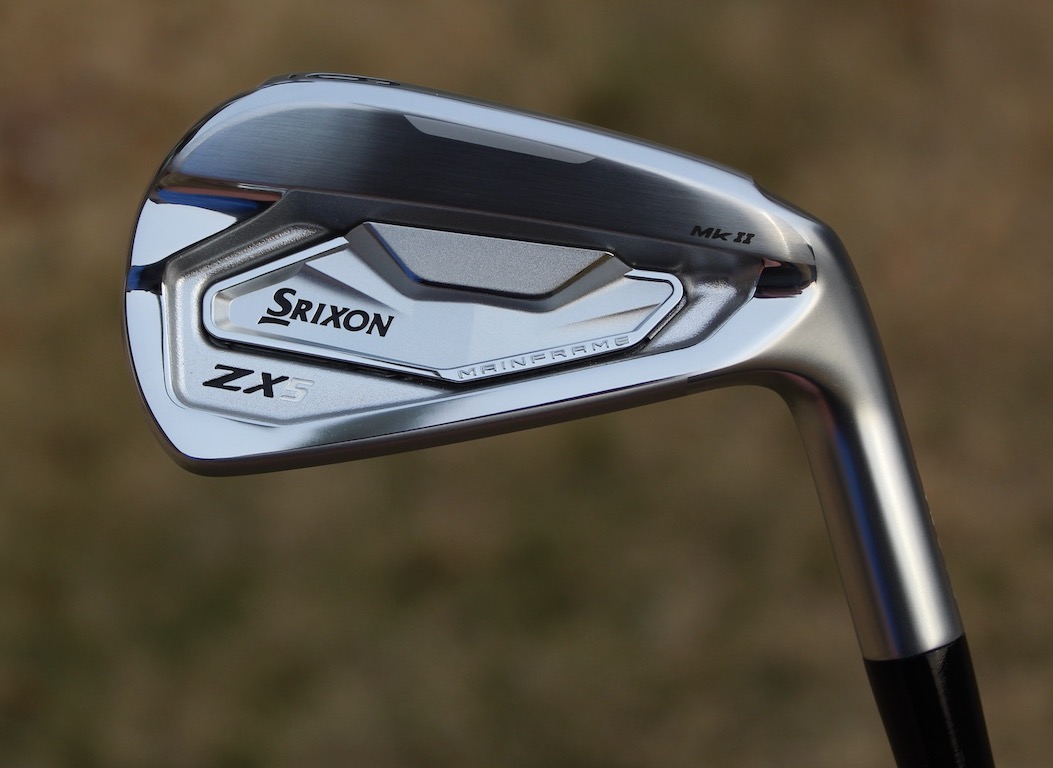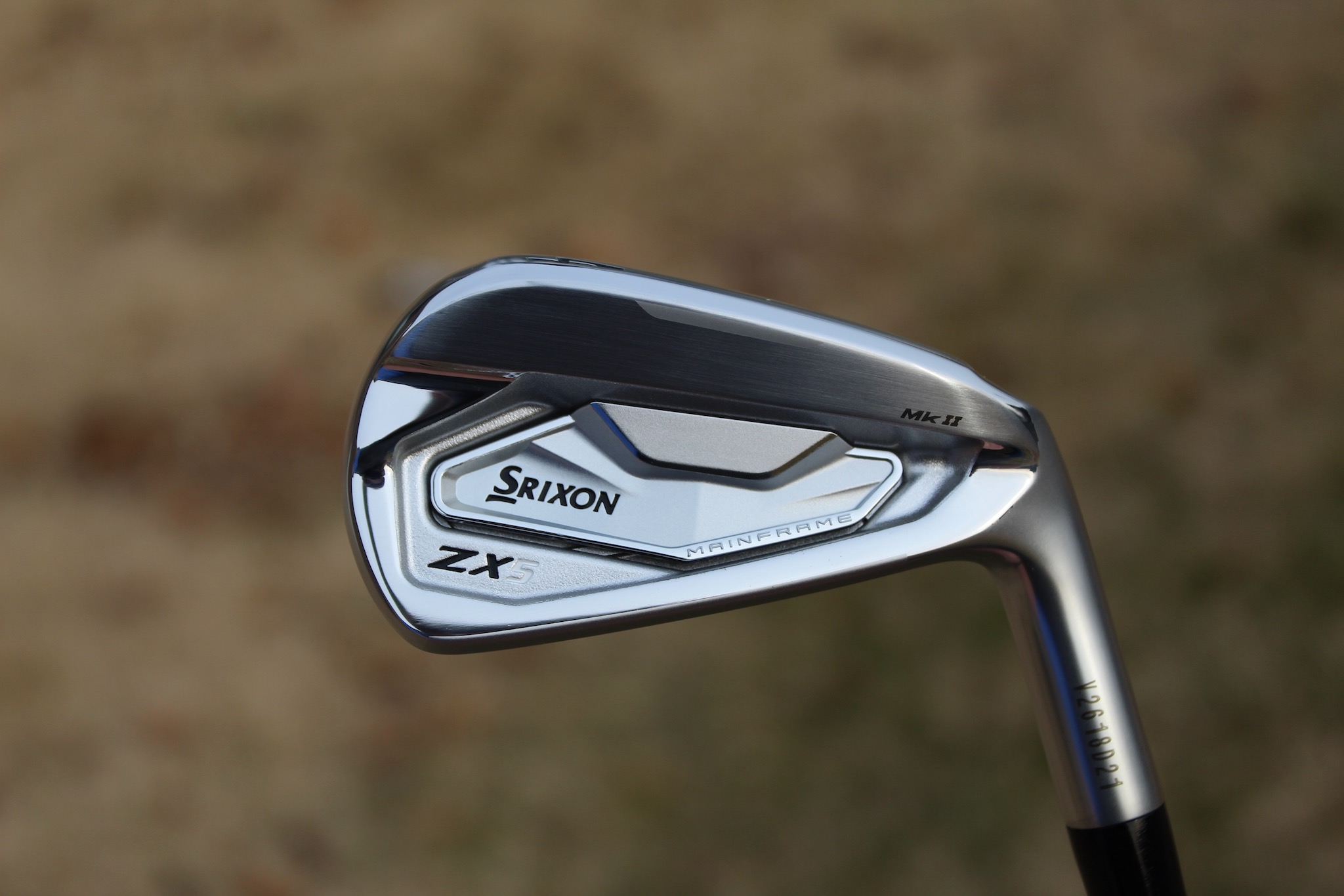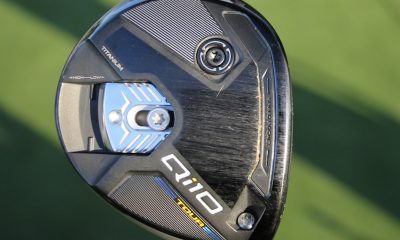Equipment
GolfWRX Deep Dive: Srixon ZX Mk II irons

Srixon’s ZX 5 and ZX 7 irons were GolfWRXer favorites, leading the way in our 2020 Best Irons and Members Choice voting. The new ZX Mk II offerings, which include — the ZX Mk II utility, ZX4 Mk II, ZX5 Mk II, and ZX7 Mk II— are off to a strong start. Already in this year’s Best Irons, our panel of fitters shortlisted the ZX 5 Mk II and ZX 7 Mk II in several categories, including placing both models in the coveted “top performers overall” category.

At the professional level, we’ve seen Hideki Matsuyama, Keegan Bradley, Graeme McDowell, Matt Kuchar, Brooks Koepka, Harold Varner III, Shane Lowry, (and more players) with ZX 5 Mk II or ZX 7 Mk II irons in play at some point this season.
To dig deeper into all things ZX Mk II, GolfWRX chatted with Patrick Ripp, the company’s Tour Engineering Manager.
Dive into the full conversation below, and when you’re done, for more information on the ZX Mk II iron family, head on over to our launch piece and check out Club Junkie’s review.
GolfWRX: Can you walk me through the Srixon ZX Mk II lineup and who each iron is best suited for?
Patrick Ripp: ZX7 Mk II irons are for players who desire tour-preferred looks and the pure feel of a premium blade, offering total control with added forgiveness from the cavity back features. It offers a tour-driven, compact shape, narrow topline, single-piece forging, and narrow sole.
ZX5 Mk II irons offer low-to-mid handicap golfers the perfect union of looks, power, height, and playability. These cavity back players distance irons, combine premium forged feel with advanced distance technology. The main features include a narrow topline, with moderate sole width, blade length, and offset.
ZX4 Mk II irons present game improvement forgiveness for mid-to-high handicap players. Behind the ZX4 Mk II’s sleek look at address and premium forged feel, is maximum forgiveness plus powerful distance. Featuring a narrow topline, moderate sole width, our longest blade length, and our highest offset, this iron is built for players looking for maximum distance and forgiveness.
Z-Forged II is our traditional muscle back blade iron designed in close collaboration with Srixon tour pros. Z-Forged II irons offer crisp feel, maximum control, and workability.
ZX Mk II Utility irons offer every player, even tour pros, more long-game power, control, and forgiveness in a blade-like design with a hollow build. Their low center of gravity and long-iron forgiveness, easily elevate launch. These clubs feature a narrow topline, our widest soles, and minimal offset.

GolfWRX: Obviously, given the ZX5 and ZX7’s impressive performance in last year’s GolfWRX Best Irons and Members Choice, you had tremendous irons. Tour success and non-staffer play speak to this as well. What was the process like to improve on what was there — all while keeping what made the ZX5 and ZX7 so good?
PR: It can be challenging to create the second generation of such a successful iron lineup. Our focus on the ZX Mk II was to not break what was working and focus on improving the performance area of each iron model design to set itself apart from the other options.
For the ZX7 Mk II irons, we wanted to introduce a technology to improve the feel at impact. We were confident in the looks, forgiveness, sole design, ball launch, and flight profile of the original ZX7’s. The original ZX7 irons also had great feel, but we knew we could expand our tour cavity design, and this is when we started to pursue the PureFrame technology.
For the ZX5 Mk II irons, we knew we wanted to continue to push the MainFrame face technology. The ZX5 Mk II irons look and feel great at address and combo well with the ZX7 Mk II’s, but what sets them apart from the ZX7 Mk II iron is the higher ball speeds, higher launch, and added forgiveness from the MainFrame technology. This technology needs to continually improve to separate itself from the competitors in the market.

GolfWRX: Speaking of PureFrame and MainFrame: Both are key technologies in the ZX Mk II iron family. Can you tell me a little more about both and how golfers benefit?
PR: PureFrame enhances feel at impact by reducing unwanted vibrations, face deformation, and reverberation. The PureFrame ridge is forged into the body of the iron, just behind the sweet spot. Strategically placed right where better players strike the ball, the result is a remarkably soft-yet-solid strike. We increased this thickness behind the impact area region by 80 percent and connected it from the Tour Cavity Muscle to the topline, creating more continuity in the club, further influencing the blade-like feel. Created through simulation and validated by tour feedback, this change created the best feeling club we have ever made.
MainFrame is a variable thickness pattern of grooves, channels, and cavities carefully milled into the backside of ZX4 Mk II, ZX5 Mk II, and ZX Mk II Utility iron faces that maximizes flex at impact. MainFrame not only boosts COR, but it also repositions mass away from the face and into the toe and sole for a lower center of gravity. This creates more than just faster ball speed, but also more consistency and forgiveness, enhancing all aspects of your iron play, shot for shot. MainFrame technology gives players the ability to hit higher and longer shots more consistently.

GolfWRX: The Tour V.T. sole is high on the list of elements that have made Srixon irons so popular. For golfers who have never really thought about what’s happening on the bottom of their irons or turf interaction, can you explain the technology?
PR: Our dynamic Tour V.T. Sole helps maintain clubhead speed through impact for clean strikes from the fairway, rough, and sand — even if you contact the turf slightly behind the ball. A higher bounce on the leading edge prevents digging; then, a lower bounce on the trailing edge curves away from the turf, so you can still manipulate the face angle for maximum workability.
The higher bounce in the leading edge produces great feel and forgiveness on shots with more forward shaft lean, while the trailing edge is ground to a more traditional players iron bounce and sole width to still allow for maximum workability at impact.
The Tour V.T. Sole has enabled us to set our irons apart from competitors, and if you ask our tour pros, they will tell you the same. It is our most well-known technology that has evolved in our last five iron lines. The sole geometry allows us to make the best-feeling, most consistent, and workable irons in the market. Each iron model has a unique V.T. Sole geometry design for each playing style, while also allowing us to manipulate the CG properties for the target players.


GolfWRX: Not to be lost in the shuffle, the Z-Forged II features a very unique look in a sea of muscleback blades. Can you talk about that?
PR: For our ZX7 Mk II players irons, we have focused on improving high-low MOI for the past few generations. The theory is that the better players typically don’t miss the center of the face on the heel or toe side as often, and their misses tend to be lower or higher on the face at the center of the grooves. This is why we have more mass in the high toe area and a more defined muscle in the ZX7 Mk II’s, which helps to increase the high-low MOI. This technology was driven from years of working with Hideki Matsuyama.
We have had prototype concepts of the Z-Forged II design since before the original ZX7s. These prototypes were vital in designing the ZX7 Mk II technology, and more importantly, the design allowed us to make a blade iron that meets Hideki Matsuyama and our other blade players’ needs. The rear design allows us to improve feel by placing more mass and thickness behind the impact area with the PureFrame technology. The heel and toe pockets take weight out of the CG height axis moving the mass higher and lower to increase high-low MOI. This improves carry distance consistency compared to a traditional blade design.

GolfWRX: What’s the value of building a combo set generally? And specifically, with the ZX Mk II irons?
PR: Combo sets allow players to set up their bags to best suit their game. They can play clubs that enhance their strengths and address their weaknesses.
Our irons are specifically designed to be combined, and that philosophy comes straight for our tour teams’ needs. Our players do not have to sacrifice looks at address for a change in performance. When developing all the iron lines, we are always working towards models that provide seamless combinations in terms of address view. From topline thickness, offset, blade length, blade heights, and toe shaping the models blend perfectly. When a player is looking for more height and a steeper land angle on their long irons, it is easy to switch from a ZX7 Mk II into a ZX5 Mk II when the address shapes are so similar, and the performance benefit is obvious.

GolfWRX: You have a new tool on your website for combo set composition. Can you tell me more about that?
PR: Our new web-based Combo Set Builder page is designed to make the combo set purchasing process as seamless as possible, while allowing for easy access to all custom options. The page also features content designed to help a player decide which set of irons best fits their game for a combo set build. We know buying the proper combo set can be an intimidating task, so we have done all we can to take the guesswork and hassle out of the process. We didn’t want to sacrifice options to accomplish this though. With our web builder, you can change the components and specs of each iron in the set as part of the purchasing process, allowing everyone to fine-tune their performance and gapping to achieve the perfect build. On top of it all, you even have the option to personalize the paint colors to ensure the set matches your style.
GolfWRX: Do you have a sense of what percentage of golfers “ought” to play a combo set…and for what percentage of golfers buying Srixon irons do?
PR: We would suggest any player who can benefit from adding forgiveness or workability to any part of their set should look into a combo set. We hope by offering a set that seamlessly transitions so naturally between different types of irons, we can give more players the opportunity to experience the benefits that come with adding forgiveness and distance to their long game and workability and control as they get closer to the green.
Including utility irons, about 70 percent of our tour players use a combo set. Not including the utilities, 50 percent of our tour staff plays a combination of the ZX5 Mk II, ZX7 Mk II, or Z-Forged II.

GolfWRX: What are the most popular combo sets golfers are building?
PR: Our most popular combo set is with ZX7 Mk II short irons and ZX5 Mk II long irons. This popular blend of cavity back designs aesthetically works extremely well, while gapping extremely well. This build offers increased forgiveness where you need it and control where you want it and can be paired with a utility iron or two to finish off the set.
What has picked up this generation is the inclusion of ZX4 Mk II irons in combo set builds. Whether paired with a ZX5 Mk II or ZX7 Mk II, the increased similarities in shaping these irons offer to the others in the Mk II series, allow for a seamless transition for those looking for maximum distance in their long irons.
- LIKE57
- LEGIT10
- WOW5
- LOL2
- IDHT1
- FLOP0
- OB1
- SHANK2
Whats in the Bag
Mike Lorenzo-Vera WITB 2024 (July)

- Mike Lorenzo-Vera what’s in the bag accurate as of the Barracuda Championship. More photos from the event here.
Driver: Callaway Paradym Ai Smoke Triple Diamond Max (8.5 degrees @7.5)
Shaft: Fujikura Ventus Black 6 X


3-wood: Callaway Paradym Ai Smoke Max (15 degrees)
Shaft: Mitsubishi Tensei 1K Black 75 TX

Utility: Callaway Apex UT (18 degrees)
Shaft: True Temper Dynamic Gold Tour Issue X100
Irons: Callaway Apex CB (3-5), Callaway Apex MB (6-10
Shaft: True Temper Dynamic Gold Tour Issue X100


Wedges: Callaway Jaws Raw (52-10S, 58-06C
Shaft: True Temper Dynamic Gold Tour Issue S400

Putter: Odyssey Ai-One #7 CS
Grip: 2Thumb Snug Tour 30

Grips: Golf Pride MCC, Golf Pride Tour Velvet
Check out more photos of Mike Lorenzo-Vera’s equipment here.
- LIKE3
- LEGIT0
- WOW0
- LOL0
- IDHT0
- FLOP0
- OB0
- SHANK0
Whats in the Bag
Andrew “Beef” Johnston WITB 2024 (July)

- Beef Johnston what’s in the bag accurate as of the Barracuda Championship. More photos from the event here.
Driver: Cobra Darkspeed LS (10.5 degrees @9.5)
Shaft: Mitsubishi Tensei AV Raw Orange 75 TX (45 inches)


3-wood: Cobra Darkspeed X (15 degrees @14)
Shaft: Mitsubishi Tensei AV Raw White Prototype 85 TX

Hybrid: Cobra King Tec (19 degrees)
Shaft: Fujikura Ventus Blue HB 8 X
Irons: Cobra King Tour (4-PW)
Shaft: True Temper Dynamic Gold Tour Issue X100


Wedges: Cobra Snakebite (48, 52, 58)
Shaft: True Temper Dynamic Gold Tour Issue S400

Putter: Scotty Cameron Tourtype SSS FB-1.5

Grips: Golf Pride MCC
Balls: Titleist Pro V1
Check out more photos of Beef’s equipment here.
- LIKE7
- LEGIT0
- WOW0
- LOL0
- IDHT0
- FLOP1
- OB0
- SHANK1
Equipment
2024 Open Championship custom staff bags and accessories

Every major championship is the time when companies express their creative sides with limited-edition bags and accessories. This year at The Open Championship is no different, as you will see below. Most of the bags and accessories around The Open will feature plaid or yellow accents as well as some reference to local legend. You will see stamps as this year’s theme, referring to the 8th hole at Royal Troon’s Old Course. This par 3 was originally named “Ailsa” but is now called “Postage Stamp” due to the nickname William Park gave the hole’s tiny green years ago.
TaylorMade
The “royal” theme inspired TaylorMade with their purple and gold staff bag. The staff bag is a deep purple and complemented with shiny gold accents with little hints at The 152nd Open Championship. Matching white headcovers feature a purple TaylorMade logo with a crown over it.


Cobra
I feel like Cobra went with a little more traditional look with its bag and headcover designs. The bright yellow bag matches the hole signs and iconic leaderboard that will be easily visible at Royal Troon this week. The headcovers are all different designs, but match with their stamp and mail themes stictched into them.


Srixon
I don’t think you can ever go wrong with a golf bag that features Scottish tartan on it! Srixon’s staff bag is a deep navy blue, red, and white with tartan on the sides. They also carried that tartan detail over to the classy headcovers that are white with green and tartan stripes near the bottom for a very Open Championship feel.


Callaway
Stamps everywhere! Callaway went heavy with the stamp theme and used them to celebrate the holes at Royal Troon. Each stamp has a hole number and graphic of the hole’s famous feature in them. For golf balls, they took the new Chrome Tour ball and used their Truvis graphics to celebrate the 1st, 8th, 11th, and 18th signature holes.


- LIKE3
- LEGIT0
- WOW0
- LOL0
- IDHT0
- FLOP0
- OB0
- SHANK1
-

 Product Reviews6 days ago
Product Reviews6 days agoThree Swing Challenge: Testing the Edel Array F-2 putter
-

 19th Hole2 weeks ago
19th Hole2 weeks ago‘You’re right, we’re always wrong!’ – Sergio Garcia receives warning during Open qualifier
-

 Equipment7 days ago
Equipment7 days agoWhat clubs do equipment free agents choose to use on tour? We found out
-

 News1 week ago
News1 week agoHighlights from the Wilson Golf Product Testing and Fitting Experience at Pinehurst
-

 News1 week ago
News1 week agoDavis Thompson’s winning WITB: 2024 John Deere Classic
-

 19th Hole1 week ago
19th Hole1 week agoMajor champ ‘disappointed’ not to be chosen as U.S. Ryder Cup captain
-

 Equipment2 weeks ago
Equipment2 weeks agoQ&A: The truth behind Bryson DeChambeau’s new Avoda irons from company founder Thomas Bailey
-

 Whats in the Bag2 weeks ago
Whats in the Bag2 weeks agoCam Davis’ winning WITB: 2024 Rocket Mortgage Classic































Pingback: What we know about Bryson DeChambeau’s 3D-printed Avoda irons – GolfWRX
Pingback: Project X Denali Blue, Black shaft Review – Club Junkie Review – GolfWRX
Pingback: Best irons in golf of 2024: Top overall performers – GolfWRX
Pingback: Best irons in golf of 2024: Most technology packed – My WordPress
Pingback: Best irons in golf of 2024: Most technology packed – GolfWRX
Pingback: Best irons in golf of 2024: Pure enjoyment – GolfWRX
Pingback: GolfWRX Members Choice presented by 2nd Swing: Best irons of 2023 - Fly Pin High
Pingback: GolfWRX Members Choice presented by 2nd Swing: Best irons of 2023 – GolfWRX